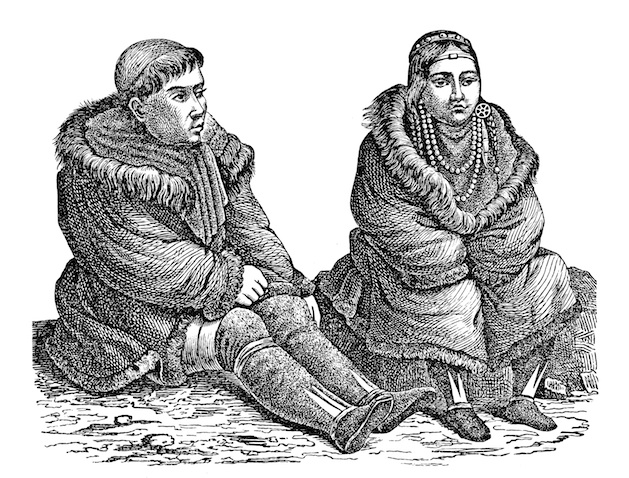The mystery of Siberia’s Death Mountain
By tushar083 - August 23, 2017
Nine students were dead. And no-one could understand why - the mystery of Siberia's Death Mountain began…
It’d taken the search team a month. But finally they’d found signs of human life on the bitterly cold, snow-covered Siberian mountain.
A tent.
But as the search team approached, they saw there was something wrong.
Its front flaps had been slashed open with a knife from the inside.
The tent had been abandoned, everything had been left behind.
Blankets, waterproofs, cooking utensils, cameras…
And, leading out of the tent down the steep mountainside were barefoot human footprints.
When the people inside the tent had abandoned it, they’d done so without any shoes or socks on. In freezing Siberian temperatures of -24º.
It was February 1959. A group of nine friends, students at a nearby university, had set off on a hike through Siberia’s Ural mountains a month before.
All of them were healthy, fit, experienced hikers who knew how to deal with the severe cold.
The expedition was only meant to last the weekend.
A month on, the young hikers hadn’t returned. And now, a search team had found their abandoned tent.
What could have driven the young friends into the deathly cold, barefoot, without supplies?
Soon, the search team began to find the dead bodies of the hikers.
First were those of Georgy Krivonischenko and Yuri Doroshenko a mile from the tent.
Both men were wearing only their underpants. Their bodies were underneath a huge pine tree, their hands and naked torsos scratched and bloodied – like they’d tried to climb the tree.
A quarter of a mile further from the tent was the body of 23-year-old Igor Dyatlov. He’d died in the frozen snow clutching a branch and staring backwards in the direction he’d come.
Near Igor were the bodies of Zina Kolmogorova and Rustem Slobodin. They’d been crawling away from the tent in the snow.
All five of them had died of hypothermia.
Investigators couldn’t understand it.
Why had such experienced hikers suddenly just abandoned their tent in the middle of the night? What or who had driven them to take their chances against the freezing cold elements, rather than stay in the comfort of their sleeping bags?
When the search team found the rest of the group, the mystery deepened further.
Nicholas Thibeaux-Brignollel, Ludmila Dubinina, Alexander Kolevatov and Alexander Zolotaryov had fled the tent at the same time as their friends, had run in the same direction.
Desperate and frightened, they’d dug frantically and hollowed out a hole in the deep snow where they’d cowered.
There, they’d met agonising and traumatic deaths.
Nicholas’s skull had been crushed to pieces. Most of Alexander Zolotaryov’s ribs had been smashed, as had Ludmilla’s – piercing her heart.
Her eyes and tongue had also been removed.
But there where no external marks or wounds on their bodies. Not even a scratch.
These four had been wearing some clothes. Only, whoever or whatever attacked them had cut them off, leaving behind fragments of their coats and trousers.
When tested, these scraps of fabric had contained high doses of radiation.
But there were no explanations.
Investigators tried to find evidence of an animal attack. But there were no animal tracks in the snow.
All the footprints and tracks in the snow belonged to the victims.
Diary entries from the trip showed the group had been in good spirits and photos later developed saw the friends smiling, hugging.
An official report concluded they’d been killed by an ‘unknown elemental force’.
In the 55 years since the baffling and frightening deaths, scientists and researchers have come up with many theories as to what happened that cold night.
Some believe the student hikers had somehow got caught up in a top-secret Russian military experiment.
Could a misfiring from an unknown weapon have caused a sonic boom or shock waves that doused the students in radiation and sent them into an insane panic?
But if so, how did the four in the dug-out get their injuries? What happened to Ludmila’s tongue and eyes?
Others speculated that a yeti had attacked, but how would any such beast attack without leaving behind footprints?
There are others who beleive that whoever attacked and killed those nine young people was not of this world.
That, at some point the hikers had been disturbed by something.
They were so scared, they slashed their way out of their tent, preferring to take their chances in the cold.
That something tracked those students down, without leaving a single print in the snow, slaughtered them – and then disappeared.
But what that something was remains unknown, and it looks like we will never know the truth behind Siberia’s death mountain.
A clue from the local people of Siberia?

Indigenous people of Siberia (Photo: iStockphoto)
The area of the Ural mountains in Siberia where the mysterious incident took place has been name the Dyatlov Pass, in honour of Igor Dyatlov, the 23-year-old engineering student who’d organised the weekend-long hike. Before that, the local indigenous people of Siberia called the area Kholat Syakhl…which translates into English as DEATH MOUNTAIN.


0 comments